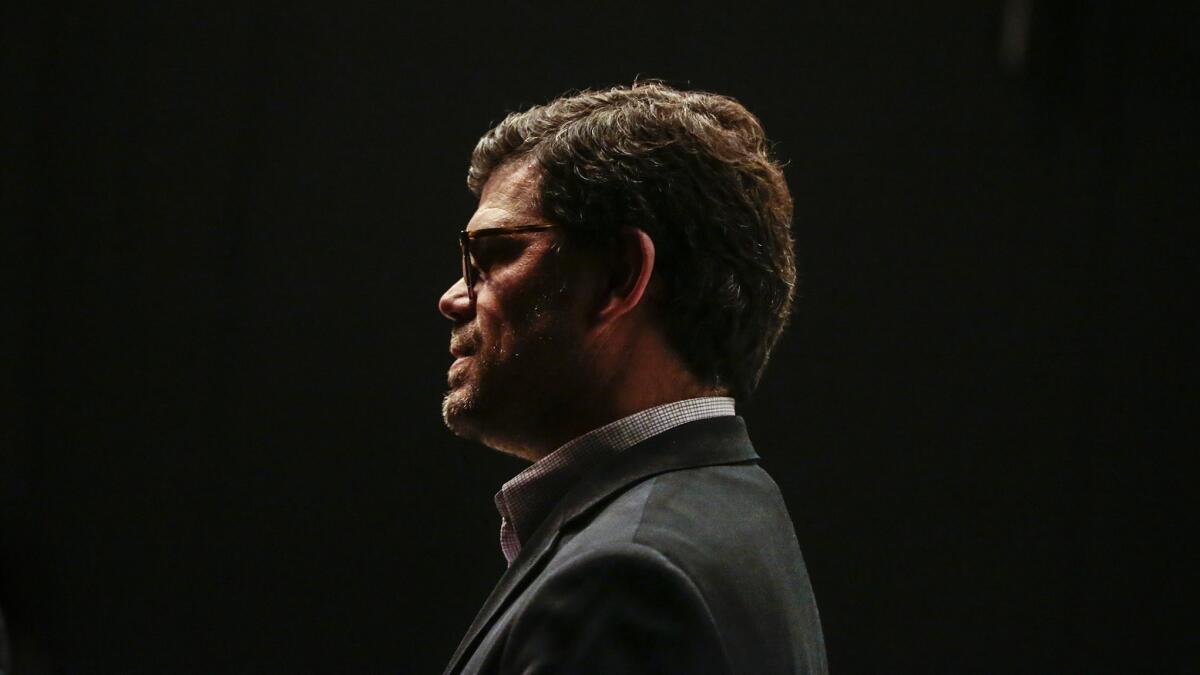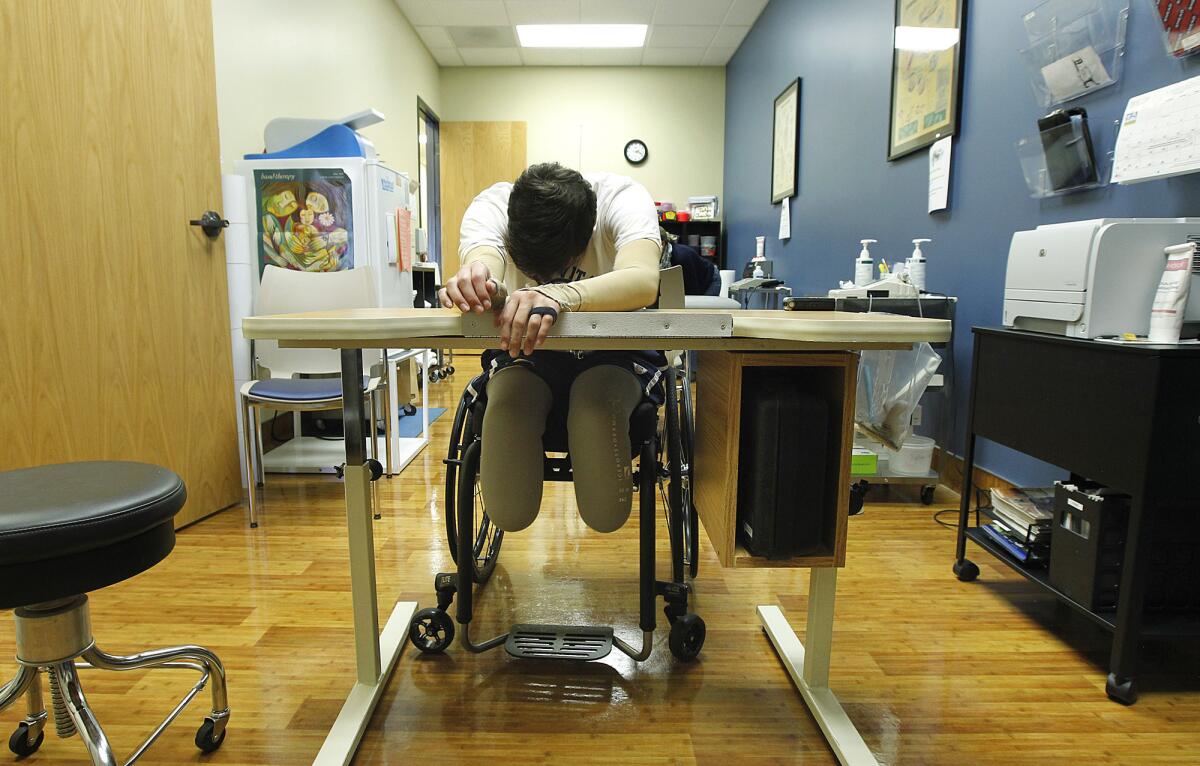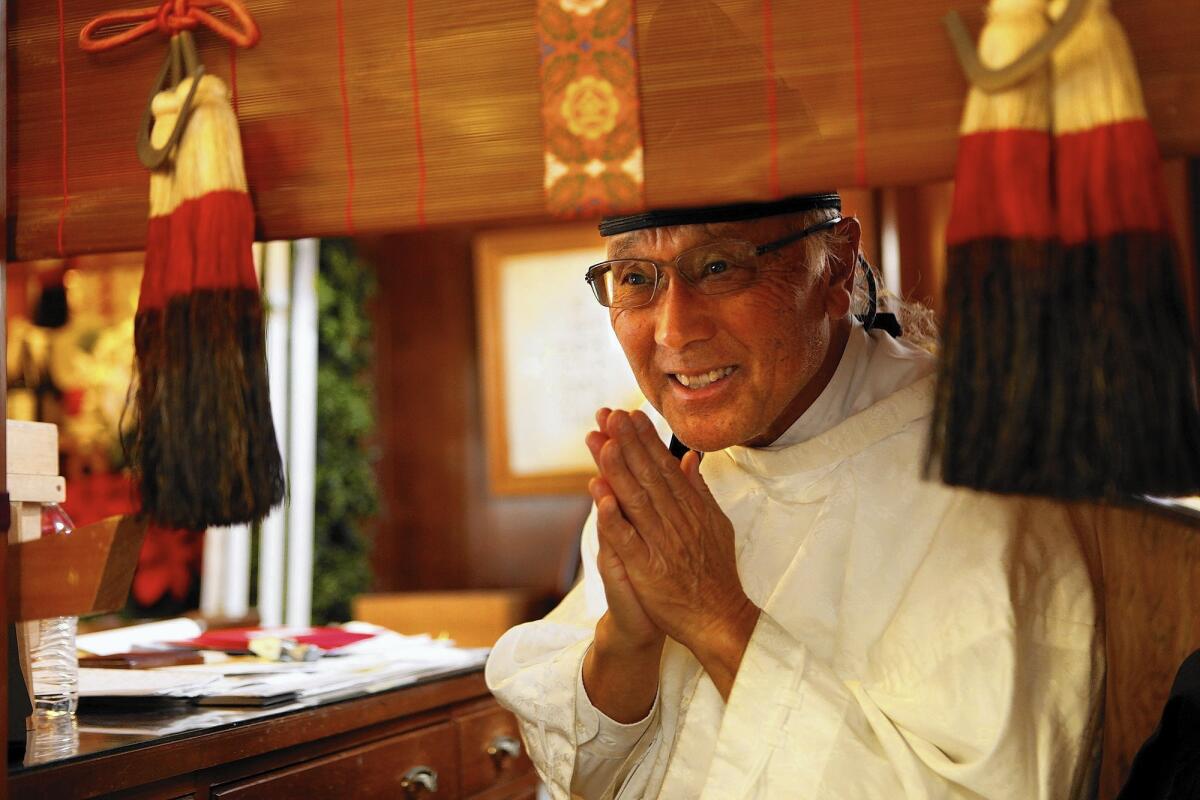Newsletter: Faith, perseverance and struggle, plus the best of 2014
- Share via
Welcome to Essential California, our weekly newsletter covering the Golden State. I’m California editor Shelby Grad. With the end of 2014 approaching, we’ll devote much of this newsletter to looking back on some of the best coverage from the last year. But first, a few highlights from this week:
Sign up here: Get the Essential California newsletter delivered to your inbox.
Pastor Goes a Year Without God

“For the next 12 months I will live as if there is no God. I will not pray, read the Bible for inspiration, refer to God as the cause of things or hope that God might intervene and change my own or someone else’s circumstances.” So wrote Seventh-day Adventist pastor Ryan Bell nearly a year ago on a blog. His post went viral, and he’s spent the last 12 months wrestling with issues of faith and exploring the world of the nonbeliever. He might not be praying, but many are praying for him during his journey.
Young Athlete Loses Legs, Gains Much More

In 2013, there were news stories about a meningitis outbreak at UC Santa Barbara. But behind the headlines was the courageous story of Aaron Loy — a strong, handsome lacrosse player whose mother called him “our golden boy.” A few weeks into his freshman year at UCSB, Loy felt sick after a day of surfing. The next day he was in the hospital, and doctors had to amputate his legs just below the knee to save his life.
The year that followed was tough, but he got through it with help from Afghanistan war veterans who were dealing with their own wounds. “They don’t let you feel down about yourself — any of those tough guys. You can tell them your sob story and they tell you theirs and they’ll always one-up you,” Aaron said. “You’re missing two feet? Well, they’re missing their knees, their arms, their fingers. They don’t let you feel bad for yourself for a second.”
Two Tales From the Eastside
L.A. is full of subcultures that are easy to miss. One is the street vendor, a familiar part of pedestrian life but not so much of car culture. These vendors live on the margins, sometimes making a few dollars for hours of hard work. The Christmas season is their savior. With more people in the shopping districts of downtown and the Eastside buying gifts, the vendors’ customer base swells. But they are always keeping an eye out for authorities, because street vending is illegal. “I have to work to pay my rent, my bills, clothes and for food — to provide the basics for my son,” said vendor Reyna Silva, who sells lime ices. “We’re all trying to find ways to make a living.”

A few miles to the east of Silva’s cart sits the Konko Church in Boyle Heights. It’s one of the last vestiges of a once-thriving Japanese American community — back in the day, Boyle Heights was a melting pot of ethnicities, including Asians, Italians, Jews, Russians and Serbs, as well as Latinos. Of the estimated 84,000 residents in Boyle Heights, only about 100 are of Japanese ancestry. But leaders of Konko are determined to keep going, even if that means adapting to the new demographics.
The Year’s Highlights
— A look at how the Mexican farmworkers who pick the produce you eat are treated. By Richard Marosi.
— A true-crime yarn about native American artifacts. By Joe Mozingo.
— A slaying involving the son of a powerful politician. The case was riveting enough, then Arnold Schwarzenegger entered the picture. By Christopher Goffard.
— A year of historic change in California earthquake safety regulations, including plans for retrofitting vulnerable buildings and a push to map quake faults. By Rong-Gong Lin II, Rosanna Xia and Doug Smith.
— An investigation into the accuracy of Los Angeles Police Department crime statistics that found serious errors that made the city look safer than it actually is. By Joel Rubin and Ben Poston.
— The epic quest to design and build L.A.’s tallest skyscraper. By Tom Curwen.
— The devastating toll the drought is taking on the people and hamlets of the Central Valley. By Diana Marcum.
— How L.A.’s generous system for paying city workers when they are injured is costing taxpayers dearly — and appears to spark abuses. By Jack Dolan.
— The plunging immunization rates for children in some of Southern California’s most affluent neighborhoods, a trend that alarms health officials. By Paloma Esquivel.
— Investigations into questionable hiring practices and nepotism in the Los Angeles city and county fire departments. By Ben Welsh, Paul Pringle, Robert J. Lopez and Michael Finnegan.
— Questions about PTSD claims by some veterans. By Alan Zarembo.
And here are some of the big stories that generated high readership on latimes.com in 2014:
— Death of Robin Williams Read more
— Isla Vista shootings Read more
— Massive downtown L.A. fire Read more
— Napa earthquake Read more
— UCLA flooding Read more
Sign up here: Get the Essential California newsletter delivered to your inbox.
Sign up for Essential California
The most important California stories and recommendations in your inbox every morning.
You may occasionally receive promotional content from the Los Angeles Times.







